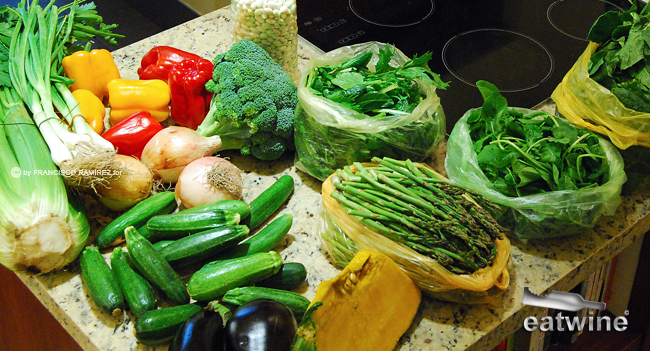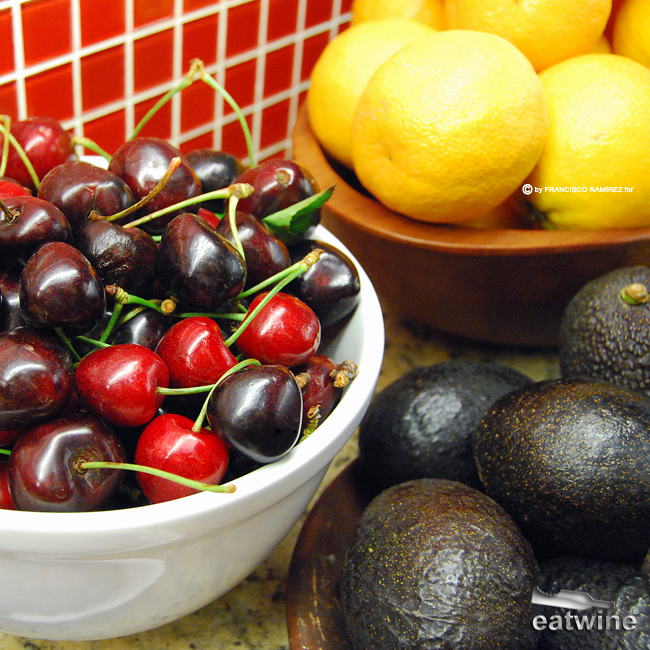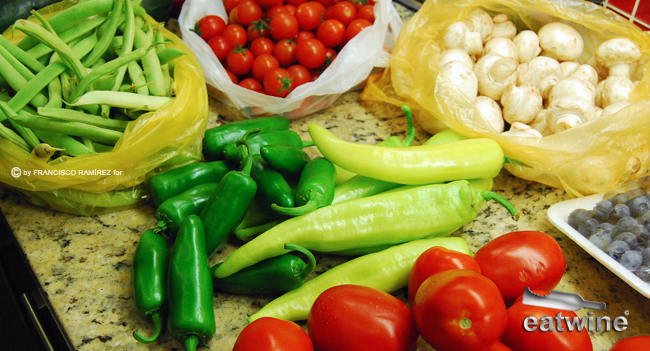It is totally possible to make a whole meal out of only vegetables. However, less than a year ago, I never would have believed that. This is now my “baseline” diet when eating at home. After changing my diet dramatically y cutting out gluten/wheat and all meat (and most dairy) except on special occasions, with this “pescatarian” diet, my palate changed considerably. In fact, it began to open in search of new flavors, in tandem as the excess kilos and body fat disappeared without much effort. More than just healthy eating though, I want to dive into how this has shifted, forever, my way of conceptualizing flavors in food, particularly with vegetables.
While I love eating out, and I do dine in many great restaurants while traveling, at the end of my trips I always crave the pure, clean flavors of vegetables when I get home. One tasting dinner after another can get monotonous, with a clear overuse and dependency of many chefs on animal protein. At times, it would seem as if meat is the only noble ingredient that could sustain the center place of a menu. While I can certainly appreciate and savor a perfectly seared Ahi tuna or a succulent leg of lamb slow cooked for 36 hour in the sous vide, the flavors in themself of the meat are not overly dynamic, they can even be a little too one-note. I find it is not overly creative to use meat as the crutch for the entire dish. I began to wonder why this is a trend in the majority of the restaurants—and homes—through South America.
My theory is the following. Poor vegetables are completely misunderstood as to their correct preparation and inherent nature—this goes for professional cooks just as much as home cooks. Beyond the spud and corn, so popular here, what on earth do you do with vegetables? How do you make them shine and taste incredible? How should you concentrate and intensify their natural flavors and slowly caramelize and coax out their sugars to create a too-good-to-stop-eating veggie dish? It’s possible and not really that difficult. Nonetheless, in the beginning, it requires a sense of adventure and willingness to experiment.
I think that main obstacle is that many people (vegans and vegetarians excluded) consider vegetables merely as sides or salads, not a main dish. The truth is when vegetables are well prepared they are delicious. The spectrum of flavors and their depth in any vegetable is at least 3-4 times greater than in same animal proteins many of us eat all the time (chicken, beef, pork, salmon, for example). Think of all the flavor possibilities to tickle your palate?! In Chile specifically, one major hurdle is that many cooks murder vegetables. Yes, they cook them to such unrecognizable states, not unlike a crime scene. Asparagus or fava beans overcooked a brownish hue—ewww! Beets boiled so long are purple mush—ick! Yellow steamed broccoli, how appetizing, NOT! It is truly a food horror movie, not only for many Chilean kids who have endured hours while finishing their plate, but adults too. Those vegetable traumas carry on into adulthood and create a culture of vegetable phobia. Poor veggies—we’re gonna help you!
The key is, in my humble opinion, to learning to transform vegetables into addictive flavors and taking the main role on your dinner table is not just transitioning out a steak for pumpkin. It’s about thinking in creating variety, in the form of several dishes with different flavors that are dynamic and play off of each other. I often look to Asian and Indian cuisine, eternal favorites with lots of vegetarian options, so here are some ideas to highlight this concept. Looking towards China, Bok choy sautéed with garlic; Chinese wine and fermented black beans; tender (blanched) bean sprout salad with a drizzle of Tamari and sesame oil; warm wild mushroom and ear fungus salad with chilies and cilantro. Or going in the Indian direction, take spinach-laden Saag Paneer; pan-seared tomatoes with spiced onions and okra from Kerala; sweet-and-sour pumpkin. Or head to the Mediterranean and with zucchini carpaccio with pesto; steamed chard with herbs like mint, basil, sage, lemon zest and a drizzle of hazelnut oil; eggplant caviar with pomegranates, Turkish-style; or grilled vegetables bathed in Morocco’s most addictive sauce, Chermoula. The list is never-ending.
Learning to prepare vegetables can take a little practice and confidence. It’s all about finding their maximum flavor point, then tasting and seasoning correctly. Splurge for a good sea salt and use delicious acids like fresh citrus juices, vinegars from wine or fruits, or herbs to turbocharge the flavor. Then pull it all together with a little bit of a delicious, healthy fat with oils like coconut, extra virgin olive, hazelnut, walnut, avocado, sesame, pumpkin seed, etc. Let all the flavors meld a little, mix, and taste again so they integrate. These are just suggestions and how I am learning to conquer vegetable preparation. There are no rules nor should you be freaked out about launching off into the unknown. Just give it a try.
To get started, it’s as easy as going to your farmer’s market (we’re blessed that in Santiago we have over 400 ferias every week!). No market? Pick a grocery store with outstanding produce. Buy what you like, what is new for you, and most importantly, what’s in season. Don’t know? Ask the growers or the staff, they will always be your partner in this learning process. Don’t know a vegetable? Ask them and their suggestions how to use it. Whatever is seasonal will always have the most flavor. Learn to eat with the seasons, it’s something we still do throughout South America, thankfully, and your palate begins to crave different vegetables as the weather transitions throughout the year. Then, just march into the kitchen and get your hands dirty. Take any veggie you bought and think about what you can do with it. Roast it in the oven, cook it until perfectly al dente, make a delicious clean soup, make it mashed, eat it raw. Maybe you want to add in an oil for flavor, deglaze or use a little stock like vegetable or wild mushroom, or sprinkle, marinate or roast with a condiment. There are so many spices in this world. As an example, think about all the things you can do with eggplant!
For me, preparing more vegetables in our diet has opened up our palates to savor many more flavors and textures than we ever thought possible. It is a thousand times more interesting than another piece of meat, unfortunately, often overcooked in Chile. If there’s an appetite for marvelous, natural flavors that speak of the seasons and moment in time we are living, it makes sense to look for it in vegetables. The best part? After a dinner with this type of menu, you can say adiós to a heavy stomach, food coma, and indigestion. Perhaps just a little wine buzz and that succulent, slightly sweet aftertaste of many vegetables that lingers in your mouth.
















